What Is Alternating Reproduction in Animals?
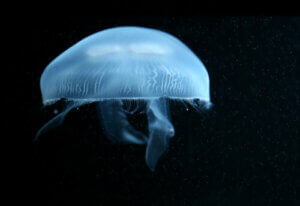
Reproduction mechanisms are usually geared towards a specific end — such as the production of large offspring or genetic diversity — but there are other ways that combine the advantages of different strategies. This is the case with alternating reproduction.
Although this reproductive adaptation is more common in plants, some animals practice it too. In this article, you can learn how this type of reproduction works and what advantages it has over sexual and asexual. Don’t miss it.
What’s alternating reproduction?
Alternating reproduction is a strategy that consists of two phases, one sexual and the other asexual, which alternate successively. In plants without flowers, where this strategy is more common, the phases are as follows:
- Sporophyte phase: The plant produces spores that give rise to others that are genetically identical to the original.
- Gametophyte phase: In this phase, the plant produces female and male gametes, which will join with those of other plants, to create genetic diversity and avoid inbreeding and homozygosity. In other words, sexual reproduction prevents all individuals of a species from being ‘equal’.
Advantages of alternating reproduction in animals
In the case of animals with this strategy, the sexual and asexual phases also occur, but they take different forms, depending on the species. The ultimate goal is to maximize the offspring and minimize the cost of reproduction.
In this way, with asexual reproduction, the animals ensure that they produce a large number of offspring. Meanwhile, with the asexual phase, they maintain the genetic diversity necessary for the survival of the species. In the following lines, you can read about the animal species that practice this reproductive strategy.
Examples of alternating reproduction in animals
Alternating reproduction can be seen mainly in invertebrates. Although at first it’s hard to imagine, the examples we’ll bring you below are species that you have surely encountered at some point in your day-to-day life.
Reproduction of ants and bees
Both bees and ants have a queen who, through sexual reproduction, is responsible for generating new members for the colony, at the start of the formation of the anthill or the hive. During this phase, all of the queen’s daughters will be a result of mixing the stored male sperm and the female’s genes.
At a certain point in the life of the colony, when it’s mature and functional, the queen will lay unfertilized eggs, from which males will hatch for a new cycle of sexual reproduction. This is the asexual phase of the reproduction of bees and ants, since these males are born by parthenogenesis of the queen.
Male ants have half as much genetic information (haploid) as queens and workers (diploid).
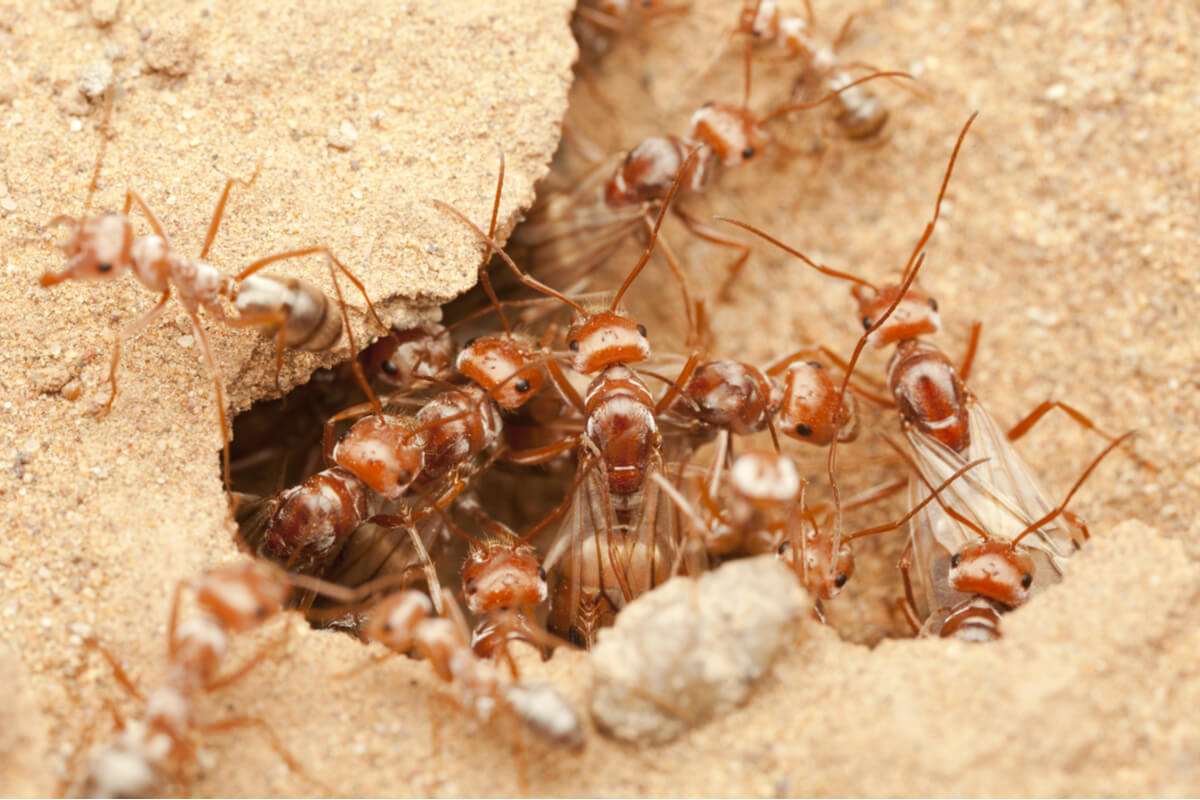
Reproduction of jellyfish
Most of the cnidarians or jellyfish go through a life cycle that brings together the 2 types of reproduction. The alternation is as follows:
- Adult jellyfish: The free-living jellyfish reproduces sexually with other individuals of its species and produces eggs.
- Larva: From these eggs, a variable number of larvae will be born, which will undergo a metamorphosis to become a polyp.
- Polyp phase: In this life stage, polyps fragment to multiply. Each polyp generated by asexual reproduction will give rise to an adult jellyfish, thus restarting the cycle.
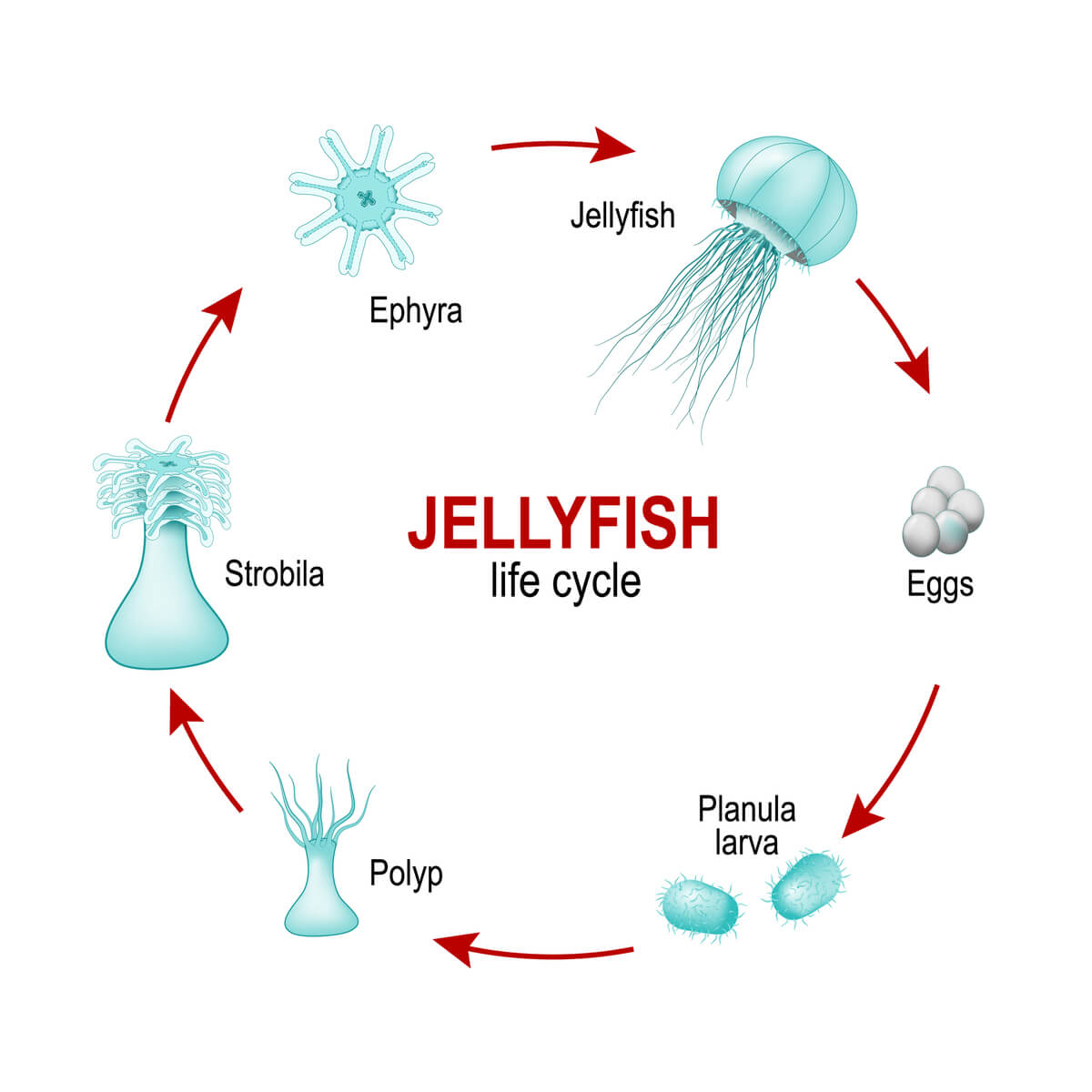
Crustaceans with alternating reproduction
Crustaceans of the genus Daphnia, also known as water fleas – even though they have nothing to do with insects – reproduce sexually, to only breed females under favorable environmental conditions. However, in harsh environments – such as a sudden cold snap – these females reproduce by parthenogenesis.
This alternating reproduction that adjusts to sudden changes in the environment is especially optimal, as only males will be born from this parthenogenesis. In this way, the populations ensure the survival of the species, as the number of males will never be greater than that of females.
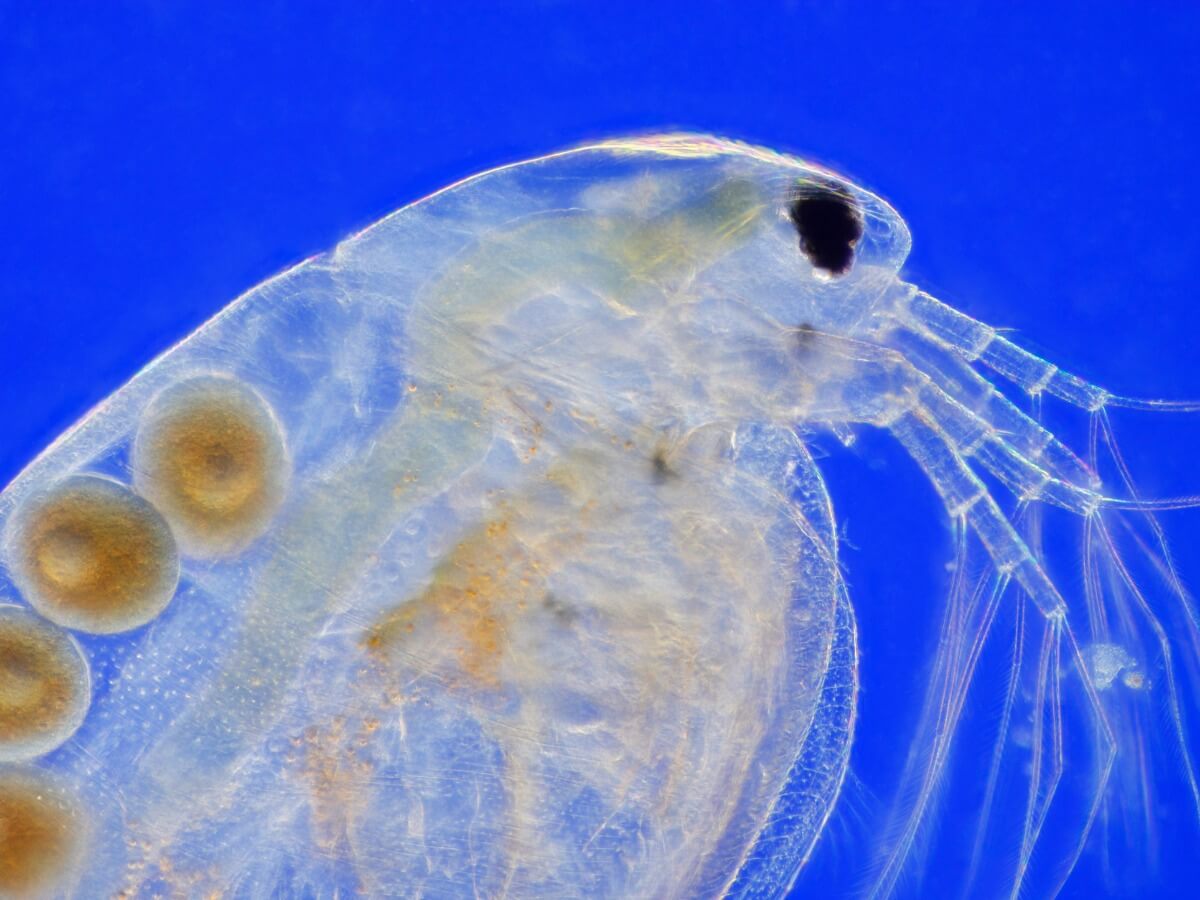
Other insects with alternating reproduction
There’s an insect called phylloxera (Phylloxera vitifoliae) that parasitizes the functioning of vines. In their sexual phase, males and females copulate so that the female lays a single egg, which hatches in summer to give rise to only females. These females will lay eggs through parthenogenesis, which will give rise to other females.
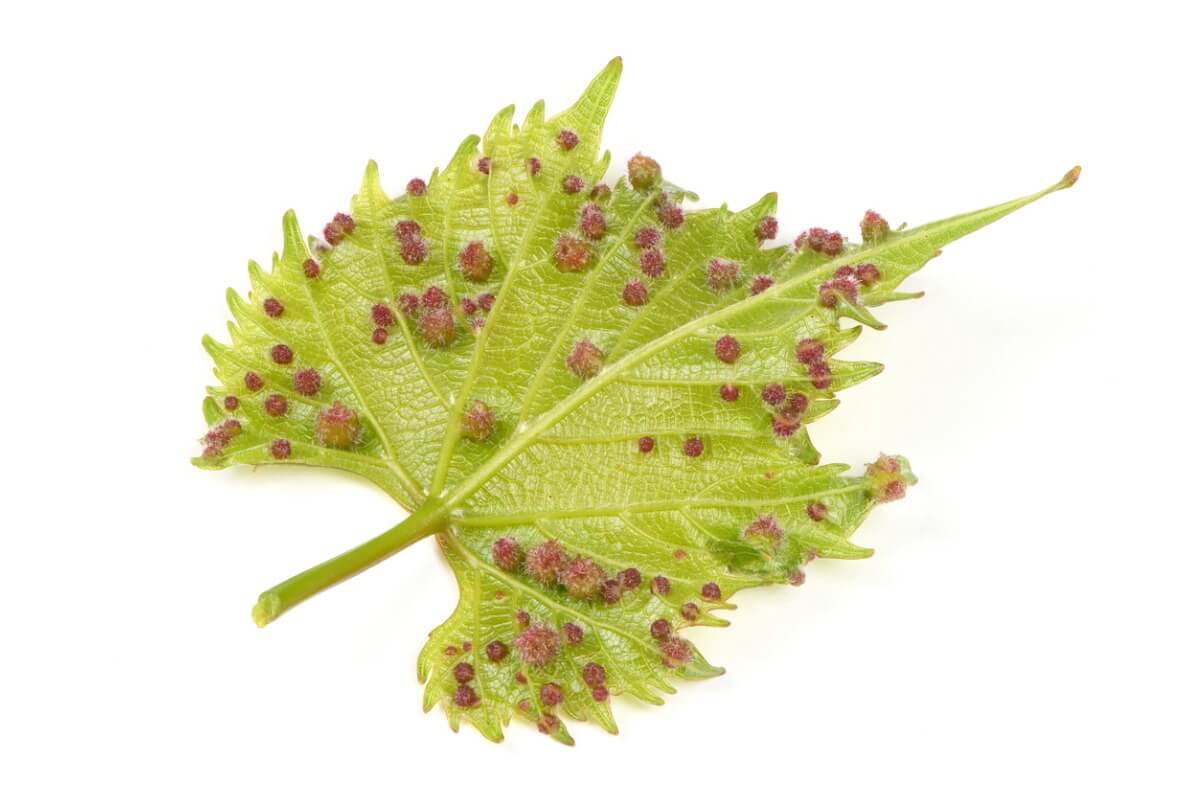
What is the dominant phase?
The sexual phase of these cycles is usually the dominant one for a simple reason. As studies explain, the presence of a paternal and a maternal chromosome in the genome of the offspring that arise through sexual reproduction prevents deleterious mutations from emerging.
If an animal has a pair of chromosomes of each type instead of just one, it’s possible that, if one of them is dysfunctional, the other can compensate for this lack. In contrast, as the asexual phases are exact copies of the mother, negative pathologies or mutations are more likely to manifest in an entire generation.

If there’s evidence that all living beings come from the same place, these are exemplified by processes such as alternating reproduction. At the present time, it may seem that animals have biological processes similar to those of plants. However, the reality is that they were never really completely separated.
Reproduction mechanisms are usually geared towards a specific end — such as the production of large offspring or genetic diversity — but there are other ways that combine the advantages of different strategies. This is the case with alternating reproduction.
Although this reproductive adaptation is more common in plants, some animals practice it too. In this article, you can learn how this type of reproduction works and what advantages it has over sexual and asexual. Don’t miss it.
What’s alternating reproduction?
Alternating reproduction is a strategy that consists of two phases, one sexual and the other asexual, which alternate successively. In plants without flowers, where this strategy is more common, the phases are as follows:
- Sporophyte phase: The plant produces spores that give rise to others that are genetically identical to the original.
- Gametophyte phase: In this phase, the plant produces female and male gametes, which will join with those of other plants, to create genetic diversity and avoid inbreeding and homozygosity. In other words, sexual reproduction prevents all individuals of a species from being ‘equal’.
Advantages of alternating reproduction in animals
In the case of animals with this strategy, the sexual and asexual phases also occur, but they take different forms, depending on the species. The ultimate goal is to maximize the offspring and minimize the cost of reproduction.
In this way, with asexual reproduction, the animals ensure that they produce a large number of offspring. Meanwhile, with the asexual phase, they maintain the genetic diversity necessary for the survival of the species. In the following lines, you can read about the animal species that practice this reproductive strategy.
Examples of alternating reproduction in animals
Alternating reproduction can be seen mainly in invertebrates. Although at first it’s hard to imagine, the examples we’ll bring you below are species that you have surely encountered at some point in your day-to-day life.
Reproduction of ants and bees
Both bees and ants have a queen who, through sexual reproduction, is responsible for generating new members for the colony, at the start of the formation of the anthill or the hive. During this phase, all of the queen’s daughters will be a result of mixing the stored male sperm and the female’s genes.
At a certain point in the life of the colony, when it’s mature and functional, the queen will lay unfertilized eggs, from which males will hatch for a new cycle of sexual reproduction. This is the asexual phase of the reproduction of bees and ants, since these males are born by parthenogenesis of the queen.
Male ants have half as much genetic information (haploid) as queens and workers (diploid).

Reproduction of jellyfish
Most of the cnidarians or jellyfish go through a life cycle that brings together the 2 types of reproduction. The alternation is as follows:
- Adult jellyfish: The free-living jellyfish reproduces sexually with other individuals of its species and produces eggs.
- Larva: From these eggs, a variable number of larvae will be born, which will undergo a metamorphosis to become a polyp.
- Polyp phase: In this life stage, polyps fragment to multiply. Each polyp generated by asexual reproduction will give rise to an adult jellyfish, thus restarting the cycle.

Crustaceans with alternating reproduction
Crustaceans of the genus Daphnia, also known as water fleas – even though they have nothing to do with insects – reproduce sexually, to only breed females under favorable environmental conditions. However, in harsh environments – such as a sudden cold snap – these females reproduce by parthenogenesis.
This alternating reproduction that adjusts to sudden changes in the environment is especially optimal, as only males will be born from this parthenogenesis. In this way, the populations ensure the survival of the species, as the number of males will never be greater than that of females.

Other insects with alternating reproduction
There’s an insect called phylloxera (Phylloxera vitifoliae) that parasitizes the functioning of vines. In their sexual phase, males and females copulate so that the female lays a single egg, which hatches in summer to give rise to only females. These females will lay eggs through parthenogenesis, which will give rise to other females.

What is the dominant phase?
The sexual phase of these cycles is usually the dominant one for a simple reason. As studies explain, the presence of a paternal and a maternal chromosome in the genome of the offspring that arise through sexual reproduction prevents deleterious mutations from emerging.
If an animal has a pair of chromosomes of each type instead of just one, it’s possible that, if one of them is dysfunctional, the other can compensate for this lack. In contrast, as the asexual phases are exact copies of the mother, negative pathologies or mutations are more likely to manifest in an entire generation.

If there’s evidence that all living beings come from the same place, these are exemplified by processes such as alternating reproduction. At the present time, it may seem that animals have biological processes similar to those of plants. However, the reality is that they were never really completely separated.
All cited sources were thoroughly reviewed by our team to ensure their quality, reliability, currency, and validity. The bibliography of this article was considered reliable and of academic or scientific accuracy.
- Granett, J., Walker, M. A., Kocsis, L., & Omer, A. D. (2001). Biology and management of grape phylloxera. Annual review of entomology, 46(1), 387-412.
- Galván, E. I. N. (2020). Reproducción en medusas comunes (escifozoos). Recursos Naturales y Sociedad.
- Huertas Rodríguez, C. K., & Arrieta Violeta, L. (2015). Taxonomic Revision of the Subgenus Daphnia and Hyalodaphnia (Daphnia genus) using Molecular Markers and Barcodes (COI). Ciencia en Desarrollo, 6(1), 77-86.http://www.scielo.org.co/scielo.php?script=sci_arttext&pid=S0121-74882015000100010
This text is provided for informational purposes only and does not replace consultation with a professional. If in doubt, consult your specialist.








